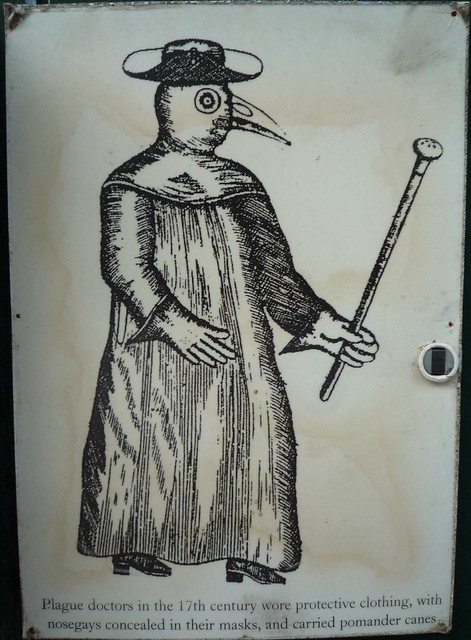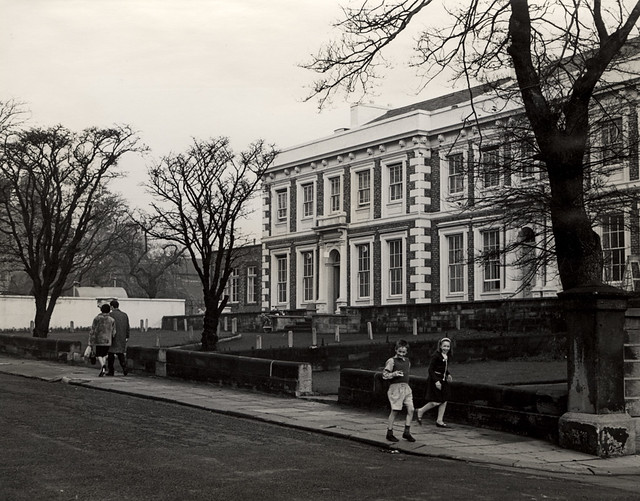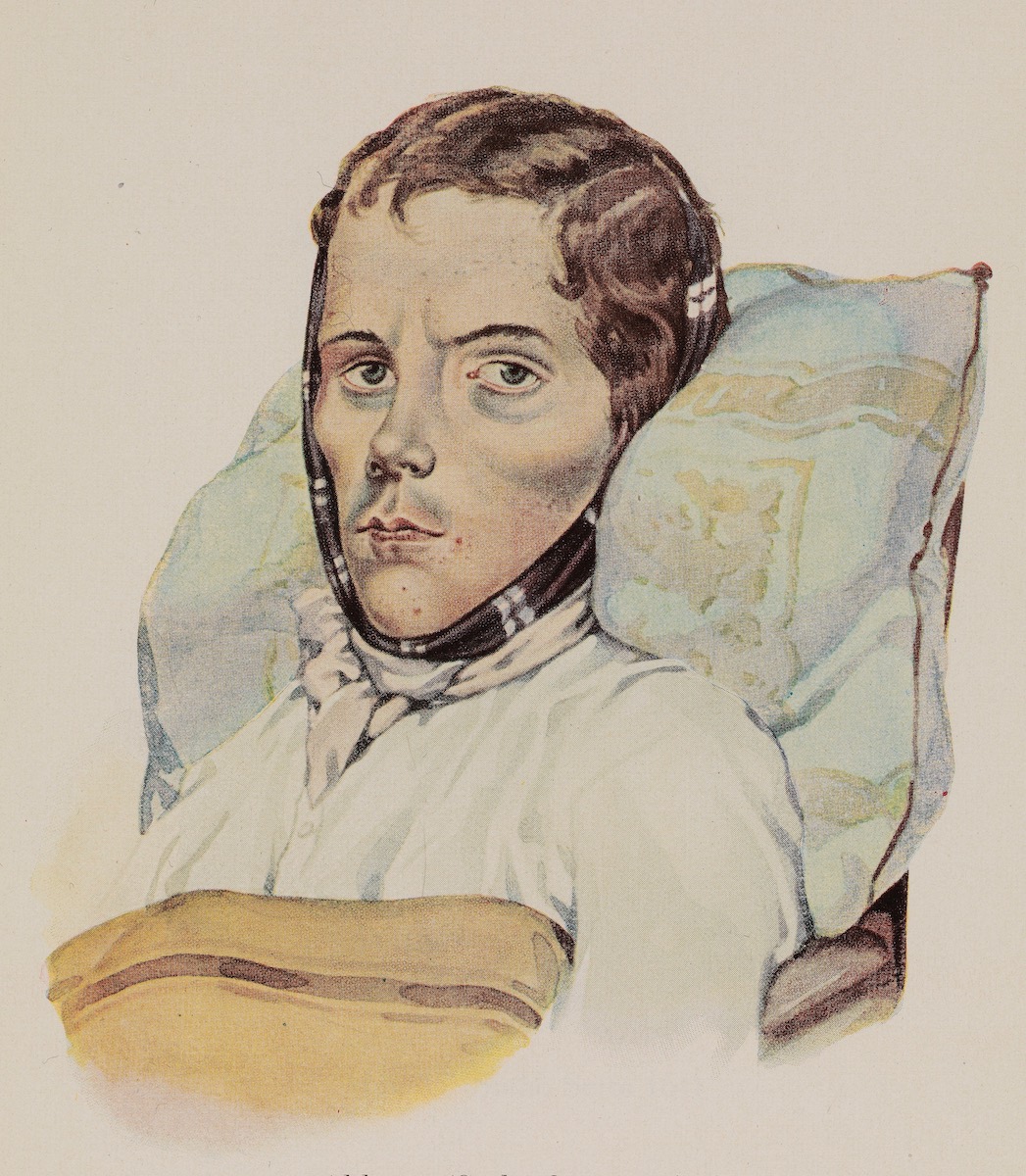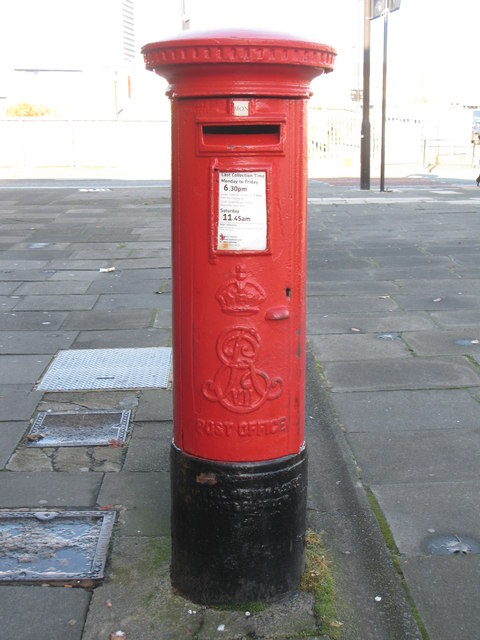Topics > Healthcare > Infectious Diseases > Bubonic Plague
Bubonic Plague
Bubonic Plague is one of three types of plague caused by the bacterium Yersinia pestis, which was typically spread by infected fleas from small animals, or sometimes from exposure to the body fluids from dead plague-infected animals. Victim's skin turned black in patches and they suffered from inflamed glands or 'buboes' in the groin, compulsive vomiting, swollen tongue and splitting headaches. Today the disease can be treated by antibiotics, but in the past it has killed millions around the world.
The 'Great Plague' of 1665-1666 was one of the worst outbreaks of plague in England since the 'Black Death' of 1348. Over 100,000 people in England died from the 'Great Plague', including at least 15% of the population in London. There had been many other outbreaks over time. Some examples from Northern England:
- From 1597 - 1598 in Penrith, 606 people died of the plague (around 40% of the population at that time).
- Between May and December of 1636, an estimated 5,631 people in Newcastle (over 40% of the population) died as a result of the plague
The plague, which raged so dreadfully this year at Newcastle, is said to have come over from Holland and other parts beyond the seas. It began at North Shields, in October, 1635, and, after an intermission of some months, broke out again at Newcastle with such fury, that there died in all, of this tremendous visitation, between the 6th of May and the 31st of December, 1636, no less than 5,037, and at Gateshead, between the 30th of May and October the 17th the same year, 515 persons. All trade was at a stand in Newcastle, and there is a tradition, that the streets of that town were covered with grass, " the highways were unoccupied." The plague raged so much in Darlington and the neighbourhood, that the fair held at Magdalen tide, was cried down.
From J. Sykes, 1833. Northumberland and Durham, Newcastle upon Tyne, and Berwick upon Tweed, from the earliest period of authentic record, to the present time..Volume 1
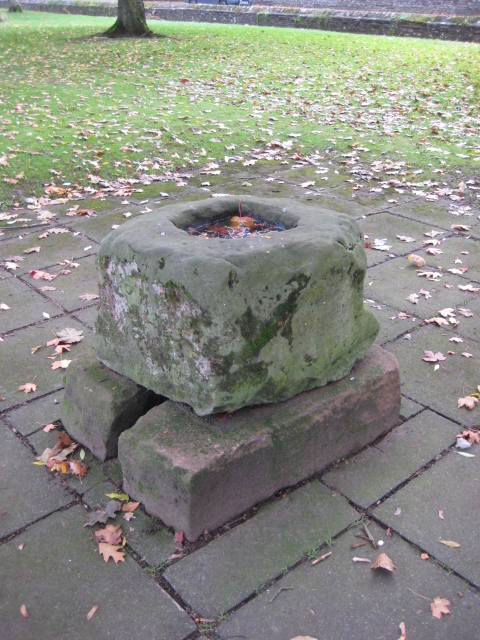
Co-Curate Page
Plague stone, Penrith
- Overview Map Street View The Plague Stone is located beside the footpath from Bridge Lane to Tynefield Drive in Penrith. It is thought to be an old cross base, and …
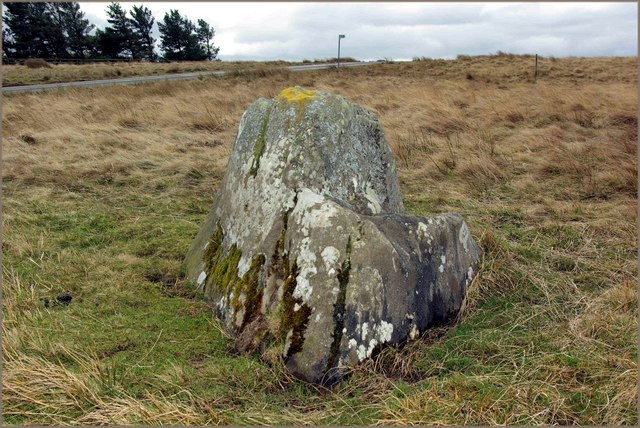
Co-Curate Page
Butter Stone, nr Lartington
- Overview Map Street View Butter Stone is a prominent boulder located on the moors near Lartington and Cotherstone. It was used during the 1663-5 plague as a place where villagers …
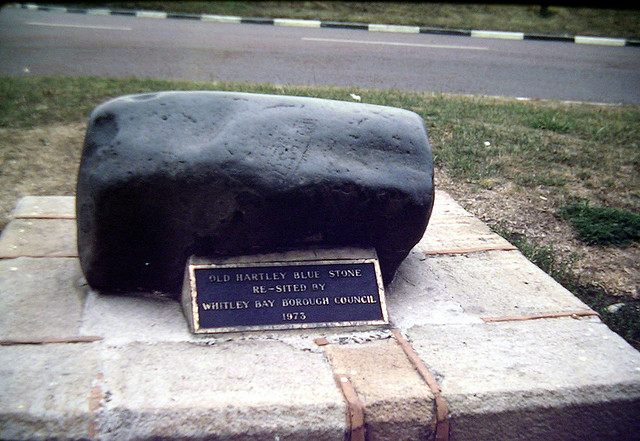
Co-Curate Page
Blue Stone
- Overview Map Street View The Blue whinstone at Old Hartley, lies outside the Delaval Arms. The stone once marked the centre of the village of Hartley. It was possibly a Saxon …
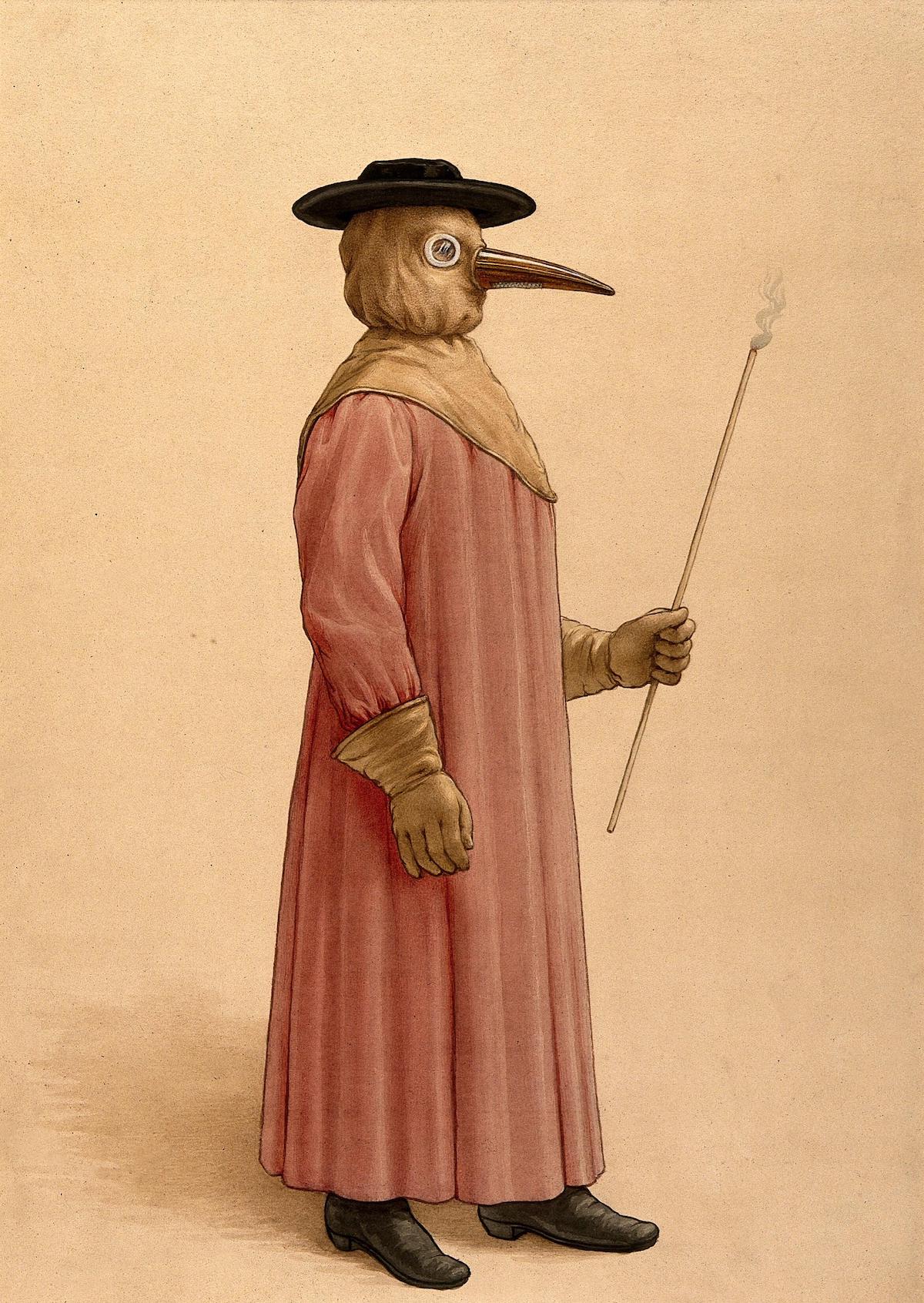
from https://wellcomecollection.or…
A physician wearing a 17th century plague preventive
- A public domain image from the Wellcome Collection.
Added by
Pat Thomson
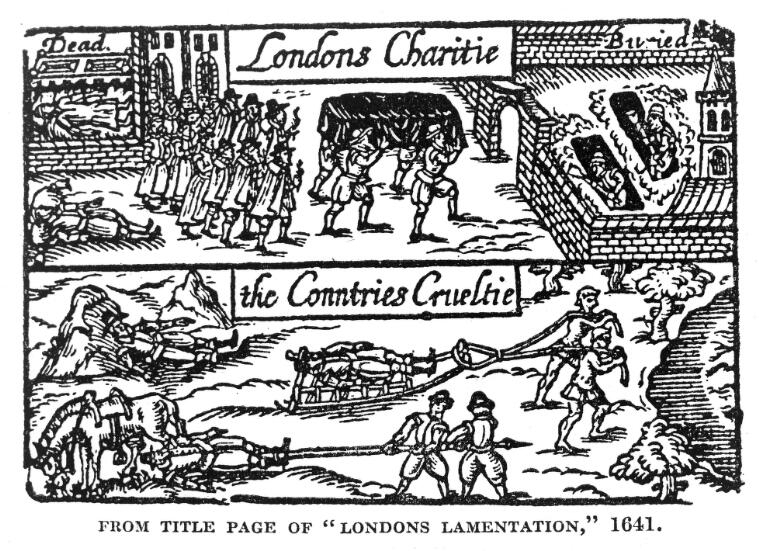
from https://wellcomecollection.or…
Plague scene; woodcut from titlepage of "London Lamentations, 1641".
- Image c/.o Wellcome Collection, available on a Attribution 4.0 International (CC BY 4.0) licence.
Added by
Pat Thomson


Co-Curate Page
Plague stone, Penrith
- Overview Map Street View The Plague Stone is located beside the footpath from Bridge Lane to Tynefield Drive in Penrith. It is thought to be an old cross base, and …

Co-Curate Page
Butter Stone, nr Lartington
- Overview Map Street View Butter Stone is a prominent boulder located on the moors near Lartington and Cotherstone. It was used during the 1663-5 plague as a place where villagers …

Co-Curate Page
Blue Stone
- Overview Map Street View The Blue whinstone at Old Hartley, lies outside the Delaval Arms. The stone once marked the centre of the village of Hartley. It was possibly a Saxon …

from https://wellcomecollection.or…
A physician wearing a 17th century plague preventive
- A public domain image from the Wellcome Collection.
Added by
Pat Thomson

from https://wellcomecollection.or…
Plague scene; woodcut from titlepage of "London Lamentations, 1641".
- Image c/.o Wellcome Collection, available on a Attribution 4.0 International (CC BY 4.0) licence.
Added by
Pat Thomson
